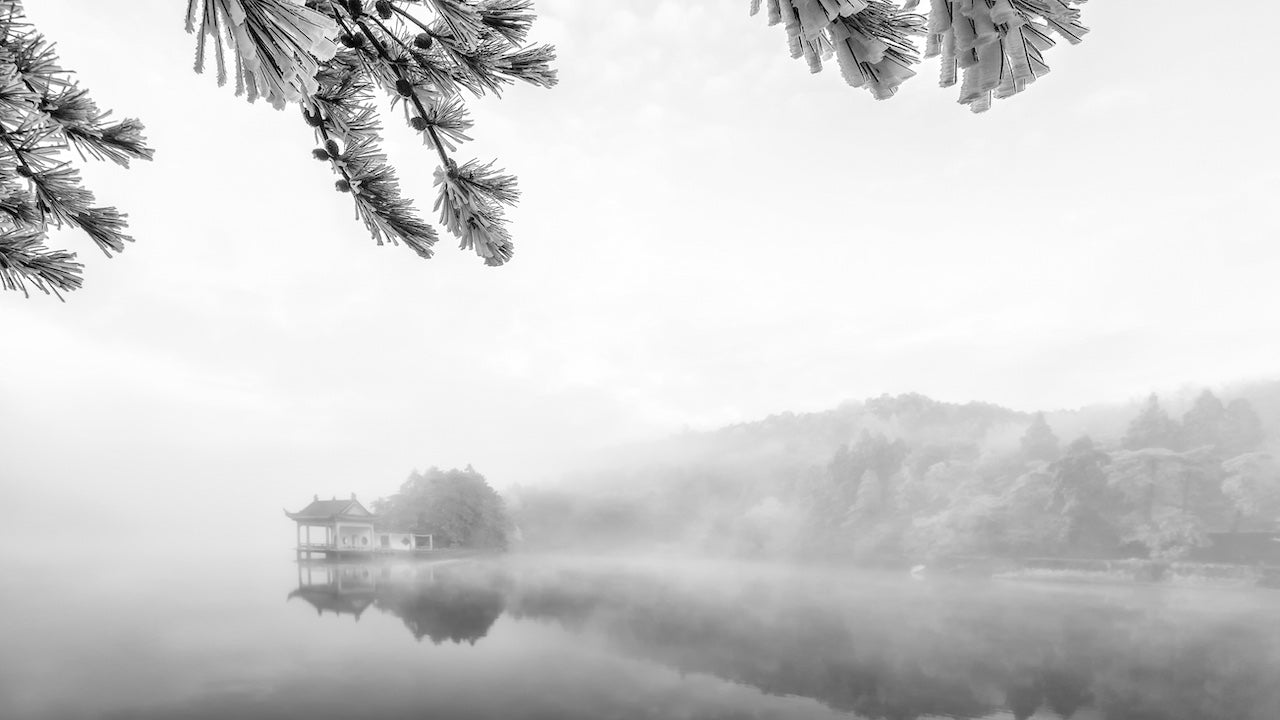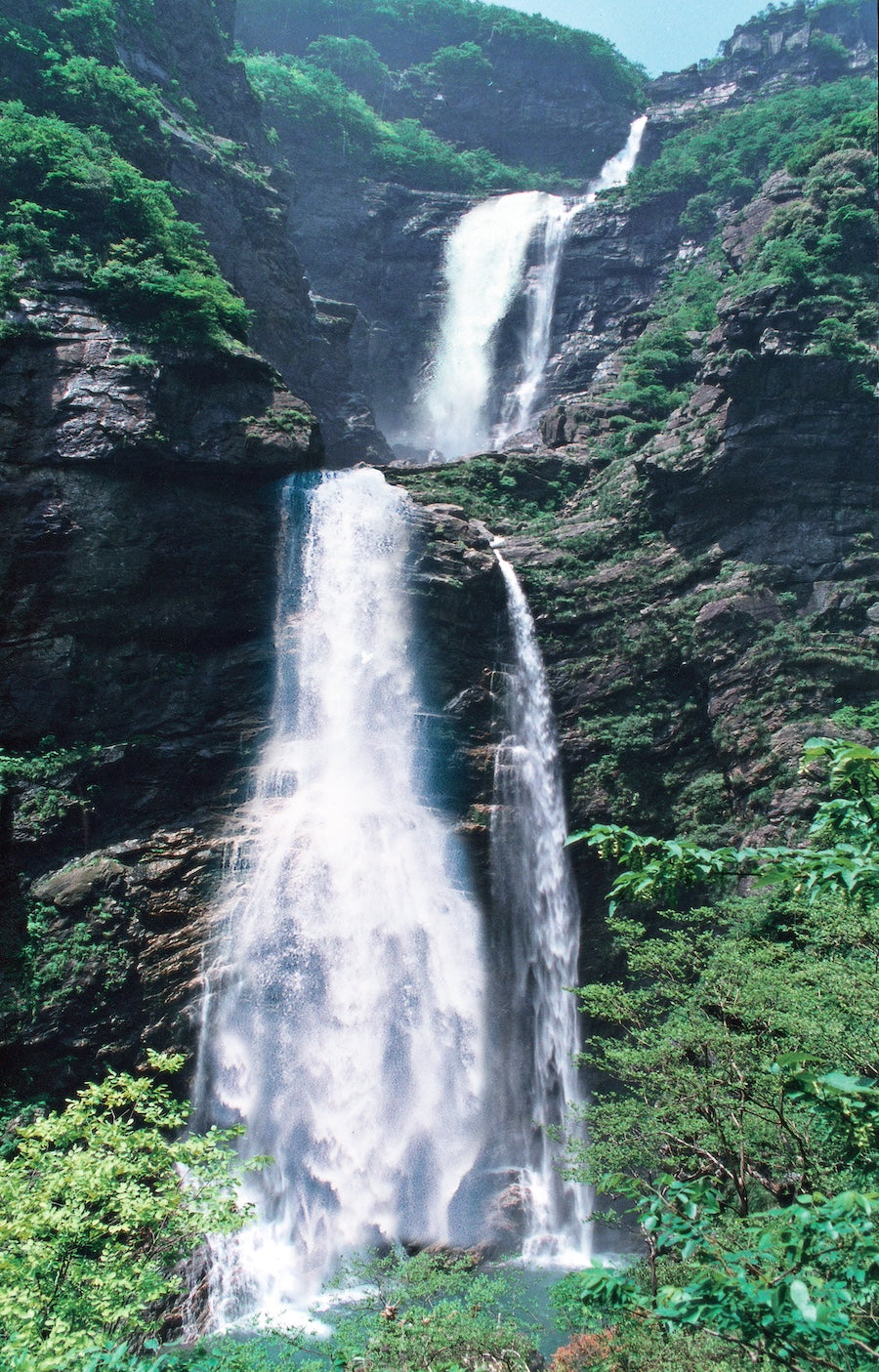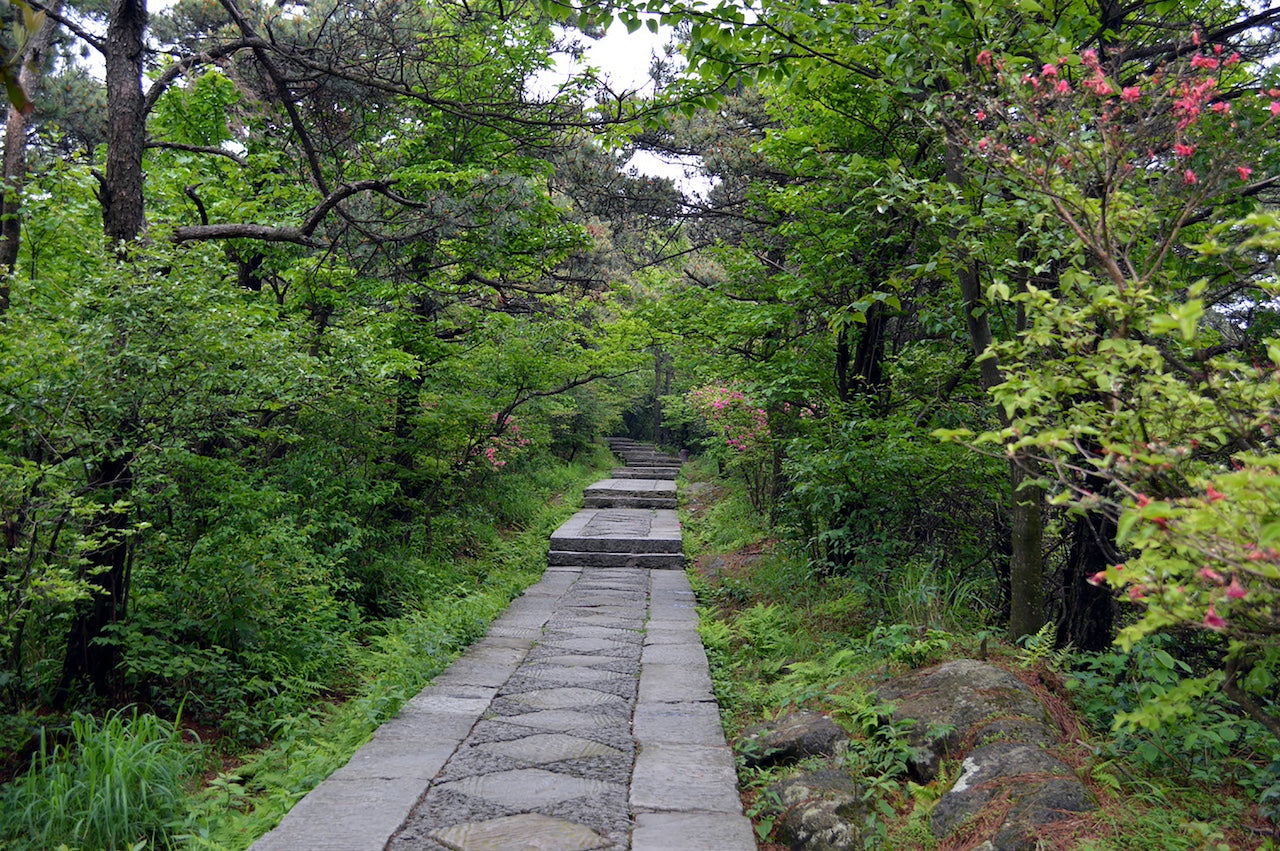Lushan Yunwu is a well-known traditional green tea in China, named after Mount Lu and its year-round cloud and mist (yunwu) covered mountains.
The region isn't only known for its amazing tea, but also its incredible scenery. Throughout history, Lushan has drawn in China's greatest poets and scholars, including Tao Yuanming, renowned for his famous work, 'Peach Blossom Spring'. Famous poet Su Shi also wrote a poem about Lushan known as 'Written on the Wall of West Forest Temple'.
Clouds & Mist

Mount Lu is situated in Jiujiang (Jiangxi province) with its highest Hanyang Peak reaching 1474m above sea level. Bounded by the Yangtze River to the north and Poyang Lake to the south, the mountain experiences continuous water evaporation, which forms clouds and rain when blocked by the humid airflow. This is in combination of the presence of mountain springs and waterfalls, results in approximately 200 foggy days per year.
The lack of sunlight, substantial temperature differences between day and night, fertile soil, and mild climate contribute to the tea trees' growth in this environment. These tea trees exhibit robust buds and leaves with visible white hairs. The clouds and fog nourish the buds and leaves, resulting in the accumulation of aromatic oils. Once these leaves are picked and processed into tea, one will notice its wonderful appearance and excellent flavour.
Lushan Yunwu History

Tea cultivation in Lushan dates back to the Han Dynasty. Historical records state that during the Eastern Han Dynasty, Mount Lu had over 300 monasteries and monks would climb the steep cliffs to gather wild tea from the clouds.
During the Eastern Jin Dynasty, Lushan became a prominent center of Buddhism. The renowned monk Huiyuan resided on the mountain for more than thirty years, attracting other monks and disciples. He preached Buddhism and contributed to the development of tea cultivation on the mountain.
By the Tang Dynasty, Lushan tea had gained significant fame. The Tang Dynasty poet Bai Juyi, who lived in Lushan, vividly described his life there, mentioning the herb garden, tea plantation, and his connection with the wildlife.
During the Ming Dynasty, the name "Lushan Yunwu tea" appeared in the "Lushan Records." It was noted that these teas originated from seeds carried by birds, which found their way into rocky crevices. Obtaining these wild teas was challenging, and the monks of Lushan monasteries played a crucial role in their cultivation. Lushan Yunwu Tea can be seen as the harmonious blend of tea and Zen.
Since the 1950s, the cultivation of Lushan Yunwu tea has flourished. The tea plantations now cover over 820 hectares across Lushan, with the highest quality tea found between Wulao Peak and Hanyang Peak, where the clouds and fog embrace the area throughout the day.
Production Method & Characteristics

The exquisite Lushan Yunwu green tea is crafted from freshly picked leaves, consisting of a bud and a leaf that unfurl to a length of approximately 3 cm. This tea undergoes a meticulous 9-step processing method, which includes fixation (kill-green), shaking, rolling, stir-frying, straightening, shaping, selecting, kneading, and drying. Each step is carefully executed to ensure the highest quality and preserve the distinct characteristics of this exceptional tea.
The buds exhibit tenderness and are adorned with delicate white hairs. The dry tea leaves are beautifully firm. Its aroma is refreshingly invigorating and lingers persistently. The taste is both sweet and mellow, providing a delightful experience. The tea's colour is clear and bright, adding to its visual appeal. When brewed, the leaves become soft, green, and uniformly distributed, enhancing the overall quality of this exquisite tea.
Recognition
In 1971, Lushan Yunwu tea was officially classified by the Chinese government as one of the renowned specialty green teas. In 1996, the United Nations Educational, Scientific and Cultural Organization (UNESCO) bestowed the prestigious World Heritage Site status upon the Lushan region. At last, in 2010, China also officially recognises "Lushan Yunwu Tea" to be a protected trademark.
Literary Works
Many poets and scholars in China's rich history have visited Mount Lu for inspiration. 2 of the most famous works are 'Written on the Wall of The West Template' by from Su Shi and 'Peach Blossom Spring' by Tao Qian.
Su Shi Poem about Lushan
Here's Su Shi's poem dedicated to Lushan (translation by Andrew W.F. Wong):
A range in panorama, peaks if viewed from the side;
Far, near, low, and high, these summits differ wide.
The true face of Mount Lushan, O ‘tis so hard to tell,
Because this very mountain, has had me right inside.
Original:
横看成岭侧成峰
远近高低各不同
不识庐山真面目
只缘身在此山中
Li Bai Poem: Gazing at the Waterfall
Here's one more beautiful poem we want to share by Li Bai, about the magnificent waterfall in Mount Lu by Tiana Wang.

Sunlight illuminates Incense Burner Peak, kindling violet smoke;
from afar, a waterfall hangs before the river.
Water flies straight down three thousand feet—
Has the silver stream of our galaxy plunged from highest heaven?
Original:
日照香炉生紫烟
遥看瀑布挂前川
飞流直下三千尺
疑是银河落九天
The Legend of 'Peach Blossom Spring'

"The Peach Blossom Spring" (桃花源记) is a tale written by Tao Qian (陶潛) in the year 421. Longing for home, Tao Qian decided to abandon his career and decided to return to back to Lushan.
The story takes place during a time of political turmoil and tells the story of a fisherman who stumbled upon a hidden paradise. Sailing into a river surrounded by blossoming peach trees, he discovered a grotto that led to a village untouched by the outside world. The villagers, descendants of those who sought refuge during civil unrest, lived in blissful ignorance of political changes. The fisherman was warmly welcomed but warned not to reveal the existence of this haven. Despite this, he marked his way out and shared the tale, leading others on fruitless attempts to find it.
Today the phrase 'peach blossom spring' is also used to describe an 'idealistic place' or an 'unrealistic dream'.
If you're interested to learn more about the historical context of this poem, we recommend to read this article by Luo Hui.

